Off-road bassin’
Follow the fish into seemingly unreachable fortresses
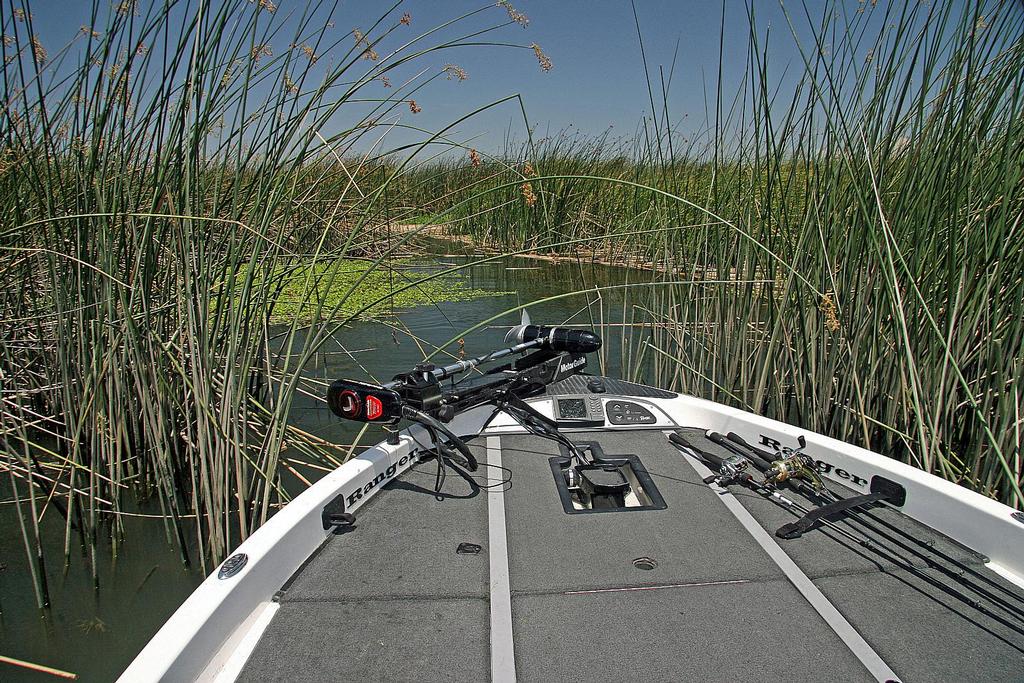
It’s one of my favorite motivational phrases: “Don’t wait for your ship to come in – swim out to it.” The same sentiment works for bass anglers wearied by the typical grind of seeking bass in the usual spots. There’s nothing wrong with those docks, rocks, bridges and grass lines, but sometimes you have to ditch that obvious stuff and push your way into some gnarly cover for a behind-the-scenes look at where the sneakiest bass seek their solace.
Reigning Forrest Wood Cup champion Randall Tharp knows all too well the potential that often awaits beyond what most consider “fishable” areas. Pushing and poking his way into Red River backwaters, he found unmolested fish that delivered him the 2013 Forrest Wood Cup title.
“First of all, at the Tour level, everybody’s really good at finding fish and catching them,” Tharp said. “Obviously, if you can get to some areas that nobody else can get to, it’s a huge advantage – you pretty much have it all to yourself.
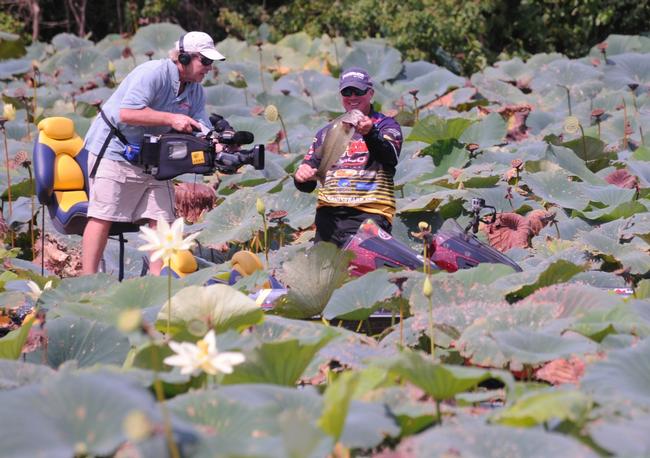 “The Red River was a good example because there were only a few guys that figured out how to get in those places. For me, being able to fish for unpressured fish is a huge thing at the Tour level.”
“The Red River was a good example because there were only a few guys that figured out how to get in those places. For me, being able to fish for unpressured fish is a huge thing at the Tour level.”
Huge indeed. So, you might wonder why everybody doesn’t run right to these hard-to-reach spots. For starters, running there is usually not the wisest move, but we’ll cover that a little later. As for the mental roadblock, it’s probably akin to the infamous sea sirens of Homer’s Odyssey – seductive and tempting, but wrought with perilous potential.
Ish Monroe, the FLW Tour pro from California puts it this way: “You’re getting the fish that the average (angler) does not fish for, because a) He’s too scared to get back there; b) He doesn’t believe he can get back there; or c) He just doesn’t want to take his boat back there.”
Where they go/why they go
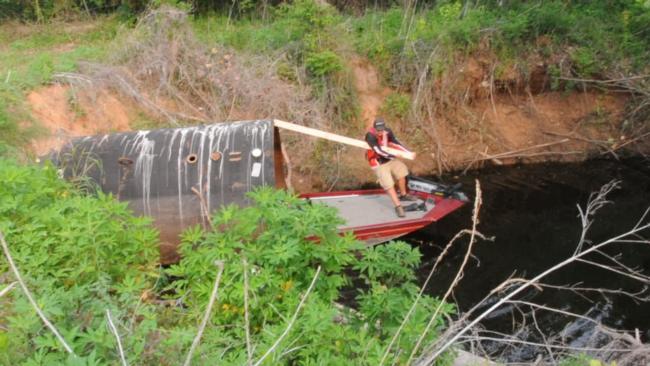 In addition to Tharp’s recent example, FLW Tour pro John Cox gave us a highlight-reel moment with his 2011 win on the Red River. Squeezing a bass boat through a storm drain rarely comes up in fishing seminars or your garden variety how-to articles, but Cox saw an opportunity and rode that crazy train all the way to trophy time.
In addition to Tharp’s recent example, FLW Tour pro John Cox gave us a highlight-reel moment with his 2011 win on the Red River. Squeezing a bass boat through a storm drain rarely comes up in fishing seminars or your garden variety how-to articles, but Cox saw an opportunity and rode that crazy train all the way to trophy time.
Also in 2011, Ken Howden left his 20-foot aluminum boat at home and opted to bring a 17-foot aluminum boat to the EverStart event on Arizona’s Lake Roosevelt. He knew he’d be looking for pre-spawners, but he also knew that the lake’s rising water level had flooded the labyrinth of timber in the upper end.
While most of the field pecked around the outskirts of the timber, Howden boldly pushed his metal boat far into the densest, nastiest cover he could find – often enduring the kind of long, awkward scraping sounds that would have a glass boat angler grimacing in agony over the inevitable gel coat damage. Howden ultimately won the tournament not because he fished any particularly innovative baits (he threw some pretty standard Texas-rigged plastics). He won because he reached fish that others did not.
For Monroe, going above and beyond is second nature when snooping around habitat that sees plenty of pressure on its outskirts. Case in point, during a past trip on the California Delta, Monroe and I approached a prominent tule berm, but rather than work a parallel course, my host nosed his Ranger boat into a small run out that continued some 20 yards before opening into a small lagoon with scattered mats of pennywort and dead tules.
Barely visible from the outside, the narrow approach exemplified the small clues that nature often presents. Follow a hunch and you might discover a hidden gem with grand potential.
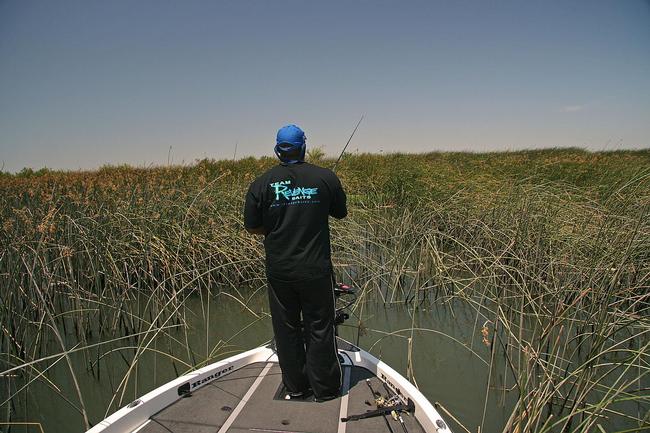 “With the tule berm, usually the water inside is a little bit deeper than around the berm itself and the fish will use that area in the springtime to spawn,” Monroe said. “You’re pushing back up through there to look for bedding fish or fish that want to bed. They’re just in an area where they feel comfortable. They feel like they can make their bed without any (threat) from predators.
“With the tule berm, usually the water inside is a little bit deeper than around the berm itself and the fish will use that area in the springtime to spawn,” Monroe said. “You’re pushing back up through there to look for bedding fish or fish that want to bed. They’re just in an area where they feel comfortable. They feel like they can make their bed without any (threat) from predators.
“It’s like building a fort – it’s protected. Also, if any bait comes in there, it’s trapped.”
Right time, right place
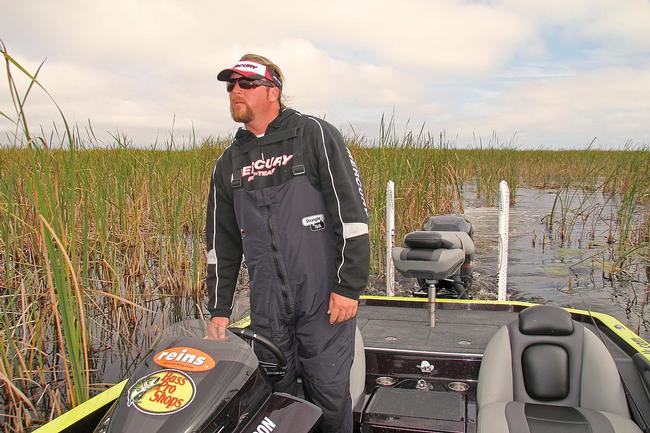 Like Monroe’s tule intrusion, Florida’s Straight Talk pro J.T. Kenney will push his bow through obvious lanes of scattered bulrush where lots of secluded pockets present attractive bedding spots to savvy bass that have been through the cycle a few times. Even after the spawn, Kenney said these inner sanctums can be a day-saver when the bite’s tough. In any scenario, though, Kenney said the off-road stuff is usually a card he holds until he really needs to play it.
Like Monroe’s tule intrusion, Florida’s Straight Talk pro J.T. Kenney will push his bow through obvious lanes of scattered bulrush where lots of secluded pockets present attractive bedding spots to savvy bass that have been through the cycle a few times. Even after the spawn, Kenney said these inner sanctums can be a day-saver when the bite’s tough. In any scenario, though, Kenney said the off-road stuff is usually a card he holds until he really needs to play it.
“That’s usually not something you’d do the first day (of a tournament),” he said. “To use a basketball term, I call it ‘going hard to the paint.'”
“Everybody just goes along the edge of mats and, the majority of the time, that’s where most of the active fish will be. But when it gets tough, you gotta go hard to the paint; you gotta bust some bushes.”
Whether the fish are responding to pressure, or just following rising water into newly accessible areas, Kenney takes a measured approach to this bush-busting. For scouting missions, he’ll idle trough the inner lanes of bulrush fields, but when he’s actually fishing, Mother Nature powers the progression.
“When you get really far up in those (weed) mats or in those bulrushes, it gets really hard to troll around,” he said. “I’ll just get upwind of the area I want to concentrate on, trim the big motor up and sometimes I won’t even put the trolling motor down. I’ll just let the wind push me through there and then use my PowerPoles to stop on good spots, or if I see a fish on a bed.”
Behind-the-scenes baits
Tharp said it’s hard to beat a jig in terms of versatility for heavy cover fishing. Pitching and flipping are the common presentations, but when open lanes avail, he won’t hesitate to swim a jig. Also effective for covering open spots to find aggressive bass in secluded pools are swimmers like the Gambler Big EZ or a Reaction Innovations Skinny Dipper.
On the Delta, or anywhere big fish hide beyond the range of normal fishing pursuits, Monroe typically starts by bombing the place with his signature Snagproof PHAT Frog to find the big, aggressive female. He then follows that up with a Missile Baits D Bomb to pick off the males. Flipping the D Bomb generally does the trick, but when wind and/or current compresses floating vegetation and forms mats within the hidden tule pond, Monroe said it’s time to go heavy and invade the fish’s personal space.
“If there’s some heavier stuff back in there, you definitely want to punch it,” he said. “When they have that extra cover, they’re really, really protected because that mat never sees any baits in it. The more cover, the more comfortable the fish is, which means the fish will be a lot more aggressive.”
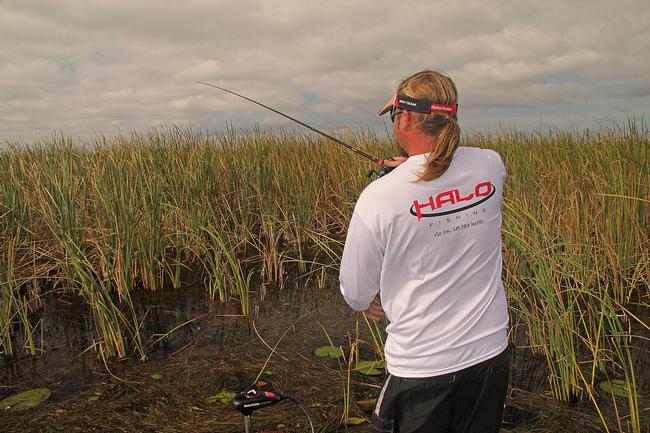 Kenney also keeps a frog handy for his off-road excursions, but most of the time he’s flipping a Gambler Ugly Otter on 5/0 hook, or the smaller Gambler BB Cricket on a 3/0 hook for a smaller presentation in tough conditions. Depending on cover density, either bait could carry up to a 2-ounce Reins tungsten weight, but Kenney said less is usually more.
Kenney also keeps a frog handy for his off-road excursions, but most of the time he’s flipping a Gambler Ugly Otter on 5/0 hook, or the smaller Gambler BB Cricket on a 3/0 hook for a smaller presentation in tough conditions. Depending on cover density, either bait could carry up to a 2-ounce Reins tungsten weight, but Kenney said less is usually more.
“I try to go with the lightest weight possible that still allows me to punch through cover with a good fall,” he said. “A lot of times, that initial fall is when you get your bite, so I want something heavy enough that it falls through pretty quickly but light enough that I’m not overpowering it.”
Concerns and considerations
Presentations and bait specifics will vary by specific area, but across the board, a few particulars will always apply. Minimizing noise should be a given, but pay attention to these points, as well:
Close Quarters: The tight confines common to these off-road bassin’ hotspots require astute attention to spacing. That means keeping rods well within the boat’s profile – preferably flat on the deck. Same goes for jackets, nets and anything else you might lay or lean loosely. And if you’re given to letting baits dangle from rod tips, you’re likely to experience one of those “limb bites” that yank your whole deal overboard.
Hostile Inhabitants: Keep watch for the aggressive critters that live in and around that heavy cover you’ll be entering. Alligators almost always run from boats, but surprise a napping swamp dragon and the response will leave a lasting impression.
Snakes are a more serious threat; particularly water moccasins and copperheads, which won’t hesitate to invade a boat and express their discontent with an angler’s encroachment.
Insects can also present an issue. The closer you get to dense vegetation, the more problematic mosquitoes and biting flies will become. And don’t forget the ones with the needles on their backsides.
On a recent trip to North Florida’s Bienville Plantation, Folgers pro Scott Suggs and I were flipping some flooded bushes when my characteristically awkward aim sent a Texas-rigged creature bait way to close to an overhanging branch. Normally, that would’ve been a non-issue, but just as my bait whizzed past the bush, Suggs and I both noticed the massive wasp nest tucked deep inside the tangle. Half an inch to the right and we would’ve have found ourselves face-to face with 100 ticked-off stinging machines.
Suggs gave me one of those “Don’t ever do that again!” looks, and I heartily agreed.
Water level: As Cox found out during his Red River off-road adventure, declining water levels can quickly turn your little slice of paradise into a precarious course. To avoid a stranding, make sure you know that reservoir’s daily release schedule and consult your tide app in places like the Cal Delta and Potomac River.
Obstructions: From experience, Tharp offers this stern warning for would-be off-road bass anglers: Know before you go.
Indeed, given the likelihood of unseen obstructions guarding the sweet spots, a few minutes of cautious approach can save hours at the service trailer (or repair shop). A push pole can be a valuable tool for entering and exiting tricky areas. Also, while anglers can’t leave their boat to access a spot during FLW tournaments, practice affords greater liberty – something Tharp uses to his advantage.
“I’ll go to the extremes of putting my Power Poles down, jumping out and wading (during practice),” he said. “At the Red River, there were some places that were very hard to get into and I ended up doing that.
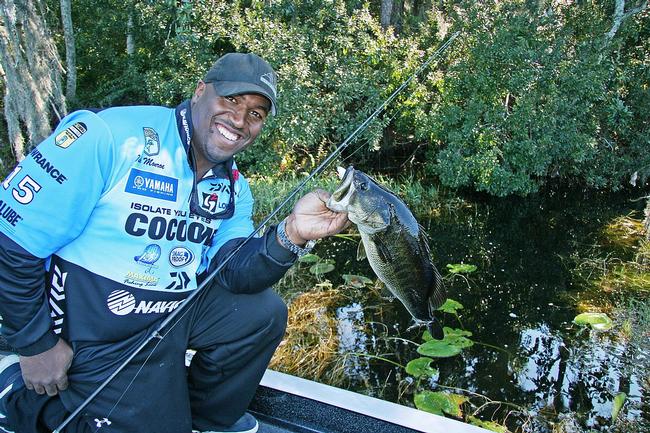 “It’s better to be safe than sorry. You just don’t go running in a place you’re not sure about. Once you determine there’s a safe path, then you can run in and out of there. But I definitely do not recommend doing that without knowing what’s there.”
“It’s better to be safe than sorry. You just don’t go running in a place you’re not sure about. Once you determine there’s a safe path, then you can run in and out of there. But I definitely do not recommend doing that without knowing what’s there.”
Monroe agrees, adding: “Go in slow, check the depth and make sure there are no rocks or logs that can damage your boat or injure yourself. Just take your time and be careful. Safety’s first.”